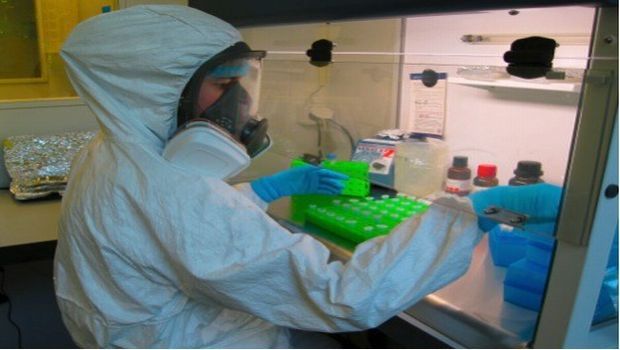Dental Plaque Bacteria Preserved for 1,000 Years Similar to That Found in Oral Cavities Today
When a University of Oklahoma researcher and an international team of experts analyzed the dental calculus or plaque from teeth preserved for 1,000 years, the results revealed human health and dietary information never seen before. The team discovered disease-causing bacteria in a German Medieval population, which is the same or very similar to inflammatory disease-causing bacteria in humans todayunlikely scientific results given modern hygiene and dental health practices.


Lead author of the study, Dr. Christina Warinner, extracts ancient DNA under clean room conditions at the University of Zürichs Centre for Evolutionary Medicine. Photo courtesy of Christina Warinner.
Â
When a University of Oklahoma researcher and an international team of experts analyzed the dental calculus or plaque from teeth preserved for 1,000 years, the results revealed human health and dietary information never seen before. The team discovered disease-causing bacteria in a German Medieval population, which is the same or very similar to inflammatory disease-causing bacteria in humans todayunlikely scientific results given modern hygiene and dental health practices.
Â
Christina Warinner, research associate in the Molecular Anthropologies Laboratories, OU College of Arts and Sciences, assembled an international team of experts using the most cutting-edge technology available to build a detailed picture of people from the Medieval period by extracting DNA from samples of the dental calculus. The samples were small, but dental calculus has a thousand times more DNA than bone. Warinner and her team also looked at and analyzed the protein in the samples for an even more detailed look.
Â
Through protein sequencing, we can reconstruct infection and immune processes. It is like excavating a battlefield archaeological site, just at a molecular scale, says Enrico Cappellini, a senior researcher from the University of Copenhagen in Denmark.
Â
What makes dental calculus so unique, according to Warinner, is that it acts both as a long-term reservoir of the oral microbiome and as a trap for dietary and environmental debris. This allows us to investigate health and disease, as well as reconstruct aspects of an individuals life history and activities. Never before have we been able to retrieve so much information from one small sample.
Â
Warinners research grew from the need for more health and dietary information, but now she wants to know why the inflammatory disease-causing bacteria found in a Medieval population also causes periodontal disease in 13 percent of humans today. Why are humans even susceptible to periodontal disease, when most animals do not get periodontal disease? Is it human behavior or something else that contributes to chronic inflammatory disease in humans? Warinner says the archaeological record provides clues.
Â
Matthew Collins, a researcher from the University of York in the United Kingdom, says, The preservation of biomolecules in dental calculus is remarkable a microbial Pompeii. He adds, As we learn more about the evolution of the oral microbiome, I can imagine a future in which most archaeologists regard calculus as more interesting than the teeth themselves.Â
Warinners research was initially considered high-risk because no one knew what, if anything, would be preserved in dental calculus. The results were significant and have contributed valuable information on the long-term relationship between humans and their resident microbes.
The study of ancient microbiomes helps us understand the evolutionary history of human health and disease," says Frank Rühli, director of the Centre for Evolutionary Medicine at the University of Zürich. It informs modern medicine.
Source: University of Oklahoma
Hiding in Plain Sight: The Most Harmful and Costly Hospital-Acquired Infection
February 5th 2025Nonventilator hospital-acquired pneumonia (NV-HAP) is a deadly, overlooked infection impacting patient outcomes. With new diagnostic tools and prevention strategies, hospitals must prioritize oral hygiene to reduce risk.
Gag Order Puts Public Health at Risk, APIC Urges Immediate Action
February 4th 2025APIC warns that the HHS gag order on CDC communications endangers public health, delaying critical infection updates and weakening outbreak response amid rising tuberculosis, avian flu, Ebola, and measles threats.